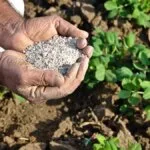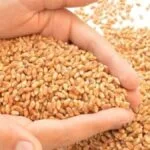Main Points In Hindi (मुख्य बातें – हिंदी में)
-
जल संकट और प्रबंधन: पाकिस्तान में जल संसाधनों की अत्यधिक कमी हो रही है, जिसमें सतही जल भंडारण का अभाव, गाद जमा होना, और भूजल स्तर में गिरावट शामिल है। इन मुद्दों के कारण कृषि विकास में बाधा आ रही है।
-
उच्च दक्षता सिंचाई प्रणाली (HEIS) का कमजोर उपयोग: पाकिस्तान में HEIS का क्षेत्र केवल 0.1 प्रतिशत है, जबकि अन्य देशों में यह प्रतिशत काफी अधिक है। किसानों की झिझक, उच्च रखरखाव लागत, और चोरी के जोखिम के कारण HEIS को अपनाने में कमी आई है।
-
किसानों की असहमति और तकनीकी चुनौती: पाकिस्तान में किसानों की फसल उत्पादन के लिए पानी के उपयोग में दक्षता बढ़ाने में रुचि की कमी है। इसके पीछे कारण तकनीकी असक्षमता, अशिक्षित श्रमिक, और सीमित रखरखाव सेवाएं हैं।
-
जल के मूल्य का कम आकलन: पानी को एक सस्ते और प्रचुर संसाधन के रूप में देखा जा रहा है, जिससे HEIS के संभावित लाभों की पहचान नहीं हो रही है। इससे जल संरक्षण प्राथमिकता नहीं बनी है।
- पारंपरिक सिंचाई के पक्ष में रुझान: चालीस प्रतिशत से कम दक्षता वाली पारंपरिक सतही सिंचाई विधियों की ओर लौटने के कारण, पाकिस्तान को जल-उपयोग दक्षता में सुधार करने की आवश्यकता है, ताकि पानी का बेहतर प्रबंधन किया जा सके।
Main Points In English(मुख्य बातें – अंग्रेज़ी में)
Here are the main points from the provided text about water management in Pakistan’s agriculture:
-
Water Crisis as a Limiting Factor: Water has emerged as a primary limiting factor for both agricultural intensity and expansion in Pakistan. Recent disputes, such as the Cholistān Canal project, have highlighted the serious challenges related to water availability.
-
Declining Water Resources: Pakistan faces rapidly declining water resources due to insufficient surface water storage, sedimentation in reservoirs, and decreasing groundwater levels. The rising costs of groundwater pumping exacerbated by high energy prices, along with population growth and food insecurity, are leading the country towards a severe water crisis.
-
Low Adoption of High Efficiency Irrigation Systems (HEIS): Despite other countries successfully adopting high-efficiency irrigation technologies, such as drip and sprinkler systems, Pakistan’s adoption rate of HEIS remains critically low, covering barely 0.1% of the total irrigated area. This limited use is largely due to farmers’ hesitance, high maintenance costs, and theft risks.
-
Barriers to Adoption: Factors contributing to the low popularity of HEIS in Pakistan include the high initial capital costs, limited availability of repair services, and farmers’ lack of education and skills. The perception of water as a cheap and abundant resource also plays a crucial role in undermining efforts toward better water management practices.
- Alternative Solutions Needed: To improve water use efficiency, Pakistan must prioritize enhancing traditional surface irrigation systems through well-established practices like laser leveling and mulching. Given the challenges in adopting HEIS, a focus on older methods and improving their efficiency may be required to meet agricultural water needs sustainably.


Complete News In Hindi(पूरी खबर – हिंदी में)
पानी निर्विवाद रूप से पाकिस्तान की कृषि की सघनता (फसल सघनता में वृद्धि) और विस्तार (खेती योग्य भूमि का विस्तार) दोनों के लिए प्राथमिक सीमित कारक के रूप में उभरा है। चोलिस्तान रेगिस्तान (पंजाब में) की बंजर भूमि को खेती के लिए पुनः प्राप्त करने के उद्देश्य से प्रस्तावित चोलिस्तान नहर परियोजना पर संघीय सरकार और सिंध के बीच हालिया विवाद से इस गंभीर वास्तविकता को फिर से उजागर किया गया है।
अपर्याप्त सतही जल भंडारण, मौजूदा जलाशयों में गाद जमा होने और भूजल स्तर में गिरावट के कारण पाकिस्तान के जल संसाधन तेजी से घट रहे हैं। बिजली और पेट्रोलियम उत्पादों की आसमान छूती कीमतों के कारण पंपिंग (भूजल) की बढ़ती लागत से किसानों के लिए चुनौती और भी बढ़ गई है। इसके अलावा, जनसंख्या विस्फोट और बढ़ती खाद्य असुरक्षा के कारण पानी की मांग लगातार बढ़ रही है। परिणामस्वरूप, देश लगातार गंभीर जल संकट की ओर बढ़ रहा है।
देशों की एक लंबी सूची ने अपने जल संसाधनों को प्रभावी ढंग से प्रबंधित करने के लिए पिछले 50 वर्षों में बड़े पैमाने पर उच्च दक्षता सिंचाई प्रणाली (एचईआईएस) – ड्रिप और स्प्रिंकलर जैसी दबाव वाली सिंचाई प्रौद्योगिकियों को अपनाया है। इन देशों ने मुख्य रूप से जनसंख्या वृद्धि और कृषि विकास के कारण बढ़ी हुई पानी की जरूरतों को बेहतर जल-उपयोग दक्षता और जल संरक्षण के माध्यम से पूरा किया है।
यह दुर्भाग्यपूर्ण है कि पाकिस्तान में एचईआईएस के तहत क्षेत्र केवल कुछ हजार हेक्टेयर तक सीमित है – कुल सिंचित क्षेत्र का मुश्किल से 0.1 प्रतिशत, जो मुख्य रूप से बगीचों, ग्रीनहाउस और सुरंगों तक ही सीमित है। यह ईरान में 24 प्रतिशत (कुल सिंचित क्षेत्र का), तुर्की में 38 प्रतिशत, चीन में 13.7 प्रतिशत और भारत में 22.57 प्रतिशत के बिल्कुल विपरीत है। सिंचाई और जल निकासी पर अंतर्राष्ट्रीय आयोग 2022-23 के अनुसार, पिछले 13 वर्षों में, भारत ने अपने HEIS के तहत 11 मिलियन हेक्टेयर भूमि जोड़ी है।
उच्च रखरखाव लागत और चोरी के जोखिम को देखते हुए किसानों की झिझक के कारण देश में उच्च दक्षता वाली सिंचाई प्रणालियाँ कुल सिंचित क्षेत्र के लगभग 0.1 प्रतिशत तक सीमित हैं।
उदार सब्सिडी द्वारा समर्थित पाकिस्तान की संघीय और प्रांतीय सरकारों के दशकों के प्रयासों के बावजूद, HEIS ने बहुत कम लोकप्रियता हासिल की है। इन प्रणालियों को अपनाने में किसानों की झिझक के अलावा, यह विडंबनापूर्ण है कि जिन लोगों ने शुरू में एचईआईएस को अपनाया, उन्होंने बाद में उनका उपयोग बंद कर दिया और सदियों पुरानी सतह सिंचाई विधियों (गुरुत्वाकर्षण प्रवाह) पर वापस लौट आए, जो 40 प्रतिशत से कम दक्षता प्रदान करते हैं – दबाव वाली प्रणालियों की तुलना में लगभग आधी।
एचईआईएस में किसानों के बीच रुचि की कमी विशेष रूप से चिंताजनक है, क्योंकि देश के लिए टिकाऊ और लचीले कृषि विकास का समर्थन करने के लिए खेत में पानी के उपयोग की दक्षता और जल उत्पादकता (पानी की प्रति यूनिट उपज) को बढ़ाना बेहद अपरिहार्य है। मुख्य प्रश्न यह है: क्या पाकिस्तान की सामाजिक और तकनीकी तत्परता उस स्तर तक पहुंच गई है जो सतही सिंचाई से एचईआईएस तक संक्रमण का समर्थन कर सकती है?
तकनीकी रूप से, ये समाधान जटिल नहीं हैं, लेकिन उत्सर्जकों और अन्य घटकों की रुकावट को रोकने के लिए लगातार रखरखाव और सावधानीपूर्वक संचालन की आवश्यकता होती है। यह मुख्यतः कृषि श्रमिकों के बीच दृष्टिकोण में बदलाव की मांग करता है – पारंपरिक, श्रम-गहन तरीकों से अधिक सटीक-केंद्रित मानसिकता की ओर।
अफसोस की बात है कि पाकिस्तान में अधिकांश कृषि श्रमिक अशिक्षित और अकुशल हैं, जो इन प्रणालियों को अपनाने के लिए एक महत्वपूर्ण चुनौती है। इसके अतिरिक्त, HEIS की मरम्मत और रखरखाव सेवाओं की सीमित उपलब्धता इसे अपनाने को और अधिक कठिन बना देती है।
कुछ विशेषज्ञ उच्च प्रारंभिक पूंजी लागत को एचईआईएस अपनाने में एक बड़ी बाधा बताते हैं। हालाँकि, सौर ऊर्जा से चलने वाले कृषि ट्यूबवेलों के लिए भी यही सच था, जिनमें हाल के वर्षों में अभूतपूर्व वृद्धि देखी गई है। वास्तव में, पिछले तीन वर्षों में, सरकार ने ट्यूबवेलों की बिजली दरों में चार बार बढ़ोतरी की है, जिससे निवेश पर रिटर्न में काफी वृद्धि हुई है और भुगतान अवधि कम हो गई है – जिससे सौर ऊर्जा किसानों के लिए अत्यधिक आकर्षक निवेश बन गई है।
पानी का कम अनुमानित मूल्य – जिसे आम तौर पर एक सस्ते, प्रचुर प्राकृतिक संसाधन के रूप में देखा जाता है – पाकिस्तान में एचईआईएस को कम अपनाने के प्रमुख अंतर्निहित कारकों में से एक है। ऐसा लगता है कि एचईआईएस के माध्यम से संभावित जल बचत के मौद्रिक लाभ, उच्च फसल पैदावार (20-100 प्रतिशत) और उर्वरक उपयोग में कमी (40-60 प्रतिशत) के लाभ के साथ, अभी तक उस सीमा तक नहीं पहुंचे हैं जो किसानों को इसके वास्तविक मूल्य के बारे में समझा सके। . परिणामस्वरूप, जल संरक्षण प्राथमिकता नहीं रही है।
आश्चर्यजनक रूप से, कई किसानों ने हाल ही में एचईआईएस को छोड़ने या उन्हें पूरी तरह से खारिज करने के लिए चोरी की बढ़ती घटनाओं को एक प्रमुख कारण बताया है। कई एकड़ में खुले मैदानों में फैले पाइप, एमिटर और वाल्व जैसे HEIS घटक चोरों के लिए प्रमुख लक्ष्य बन गए हैं।
किसान अतिरिक्त चिंताएँ लेने को तैयार नहीं हैं, क्योंकि वे पहले से ही सौर ऊर्जा से चलने वाले ट्यूबवेलों से प्रमुख भागों – वेरिएबल फ़्रीक्वेंसी ड्राइव, सौर पैनल और केबल – की बड़े पैमाने पर चोरी से परेशान हैं, जिससे उन्हें इन क़ीमती सामानों की रखवाली करने के लिए रातें बितानी पड़ती हैं।
इसलिए, 75 प्रतिशत की भारी सरकारी सब्सिडी (पंजाब में) के बावजूद, जो प्रति एकड़ 0.2 मिलियन रुपये से अधिक है, एचईआईएस की समग्र गोद लेने की दर उम्मीद से कम है। नतीजतन, पाकिस्तान के पास पारंपरिक सतही सिंचाई प्रणालियों की जल-उपयोग दक्षता में सुधार को प्राथमिकता देने के अलावा कोई विकल्प नहीं है।
इसे लेजर लेवलिंग, मल्चिंग, फरो सिंचाई, वैकल्पिक गीला करने और सुखाने की तकनीक (चावल की फसलों के लिए), बेसिन सिंचाई प्रणाली (बगीचों में), और मौसम पूर्वानुमान-संचालित सिंचाई शेड्यूलिंग सहित आजमाई हुई और परीक्षण की गई प्रौद्योगिकियों और सिंचाई प्रथाओं को बढ़ावा देकर हासिल किया जा सकता है। इसके अतिरिक्त, किसान-नियंत्रित जलस्रोतों में अस्तर और गाद और खरपतवार की नियमित सफाई के माध्यम से परिवहन हानि को कम करना अत्यधिक आवश्यक है।
चौधरी मोहम्मद अशरफ पंजाब कृषि विभाग के पूर्व महानिदेशक (ऑन-फार्म जल प्रबंधन) हैं, और खालिद वट्टू एक किसान और विकास पेशेवर हैं।
डॉन, द बिजनेस एंड फाइनेंस वीकली, 25 नवंबर, 2024 में प्रकाशित
Complete News In English(पूरी खबर – अंग्रेज़ी में)
Water is undoubtedly a key limiting factor for both agricultural intensity (increased crop density) and expansion (expansion of arable land) in Pakistan. A recent dispute between the federal government and Sindh over the proposed Cholistan Canal project, aimed at reclaiming the barren land of the Cholistan Desert in Punjab for farming, highlights this pressing issue.
Pakistan’s water resources are rapidly dwindling due to inadequate surface water storage, sediment buildup in existing reservoirs, and declining groundwater levels. Rising costs of pumping water—exacerbated by soaring electricity and petroleum prices—pose additional challenges for farmers. Moreover, the growing population and increasing food insecurity have led to a continuous rise in water demand. Consequently, the country is heading towards a severe water crisis.


Many countries have successfully adopted high-efficiency irrigation systems (HEIS), such as drip and sprinkler technologies, over the past 50 years to effectively manage their water resources. These nations have met increased water needs due to population growth and agricultural development through improved water use efficiency and conservation.
Unfortunately, in Pakistan, the area under HEIS is limited to just a few thousand hectares, accounting for less than 0.1% of the total irrigated area and primarily restricted to orchards, greenhouses, and tunnels. In stark contrast, countries like Iran (24%), Turkey (38%), China (13.7%), and India (22.57%) have significantly higher proportions of their irrigated areas covered by HEIS. According to the International Commission on Irrigation and Drainage, India alone has added 11 million hectares under HEIS in the last 13 years.
Farmers are hesitant to adopt high-efficiency irrigation systems due to their high maintenance costs and risks of theft, limiting their implementation in Pakistan to about 0.1% of the irrigated area.
Despite decades of efforts backed by generous subsidies from federal and provincial governments, HEIS remain unpopular in Pakistan. Ironically, some farmers who initially adopted HEIS have since abandoned them and returned to traditional surface irrigation methods, which only offer around 40% efficiency—almost half that of pressure-based systems.
The lack of farmer interest in HEIS is alarming, as improving water use efficiency and water productivity (yield per unit of water) is essential for sustainable and resilient agricultural development in the country. The critical question is whether Pakistan’s social and technical readiness has reached a level that supports the transition from surface irrigation to HEIS.
Technically, these solutions are not complex, but they require ongoing maintenance and careful operation to prevent interruptions from emitters and other components. This calls for a shift in mindset among agricultural workers—from traditional, labor-intensive methods to more precise, targeted approaches.
Unfortunately, most agricultural workers in Pakistan are uneducated and unskilled, posing a significant challenge to adopting these systems. Moreover, limited availability of repair and maintenance services for HEIS makes adoption even more difficult.
Some experts argue that the high initial capital costs of HEIS are a major barrier to adoption. However, the same was true for solar-powered agricultural tubewells, which have seen unprecedented growth in recent years. In fact, over the last three years, the government has raised electricity rates for tubewells four times, significantly increasing returns on investment and shortening payback periods, making solar energy an attractive investment for farmers.
Another major underlying factor for the low adoption of HEIS in Pakistan is the underestimation of water’s value, often viewed as a cheap and abundant natural resource. The potential monetary benefits from water savings through HEIS, along with higher crop yields (20-100%) and reduced fertilizer use (40-60%), have not yet reached a level that helps farmers comprehend its true value. As a result, water conservation has not been prioritized.
Surprisingly, many farmers have cited the rising incidents of theft as a major reason for abandoning or rejecting HEIS. Components of HEIS, like pipes, emitters, and valves, lying exposed in fields have become prime targets for thieves.
Farmers are reluctant to take on additional concerns as they are already troubled by large-scale theft of critical components—like variable frequency drives, solar panels, and cables—from their solar-powered tubewells, forcing them to spend nights guarding these valuable assets.
Consequently, despite a substantial government subsidy of 75% (over 200,000 PKR per acre in Punjab), the overall adoption rate of HEIS remains disappointingly low. As a result, Pakistan has no option but to prioritize improvements in the water-use efficiency of traditional surface irrigation systems.
This can be achieved by promoting proven technologies and irrigation practices, such as laser leveling, mulching, furrow irrigation, alternate wetting and drying techniques (for rice crops), basin irrigation systems (in orchards), and weather forecast-based irrigation scheduling. Additionally, reducing transport losses through regular cleaning of farmer-controlled water sources is crucial.
Chaudhry Mohammad Ashraf is a former Director General of the Punjab Agriculture Department (On-Farm Water Management), while Khalid Wattoo is a farmer and development professional.
(Published in Dawn, The Business and Finance Weekly on November 25, 2024)


 By
By 





